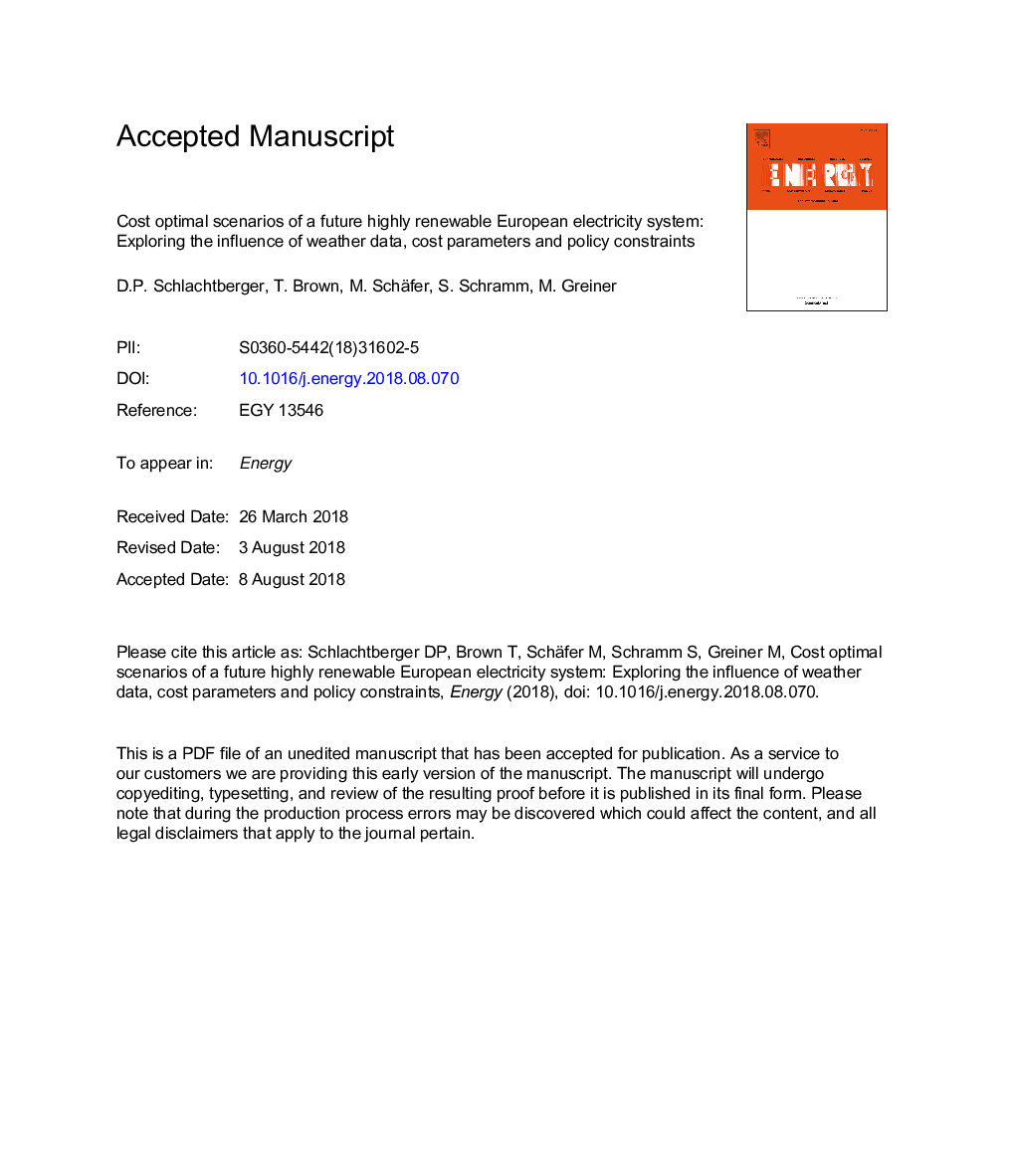| Article ID | Journal | Published Year | Pages | File Type |
|---|---|---|---|---|
| 8948723 | Energy | 2018 | 19 Pages |
Abstract
Cost optimal scenarios derived from models of a highly renewable electricity system depend on the specific input data, cost assumptions and system constraints. Here this influence is studied using a techno-economic optimisation model for a networked system of 30 European countries, taking into account the capacity investment and operation of wind, solar, hydroelectricity, natural gas power generation, transmission, and different storage options. A considerable robustness of total system costs to the input weather data and to moderate changes in the cost assumptions is observed. Flat directions in the optimisation landscape around cost-optimal configurations often allow system planners to choose between different technology options without a significant increase in total costs, for instance by replacing onshore with offshore wind power capacity in case of public acceptance issues. Exploring a range of carbon dioxide emission limits shows that for scenarios with moderate transmission expansion, a reduction of around 57% compared to 1990 levels is already cost optimal. For stricter carbon dioxide limits, power generated from gas turbines is at first replaced by generation from increasing renewable capacities. Non-hydro storage capacities are only built for low-emission scenarios, in order to provide the necessary flexibility to meet peaks in the residual load.
Keywords
Related Topics
Physical Sciences and Engineering
Energy
Energy (General)
Authors
D.P. Schlachtberger, T. Brown, M. Schäfer, S. Schramm, M. Greiner,
